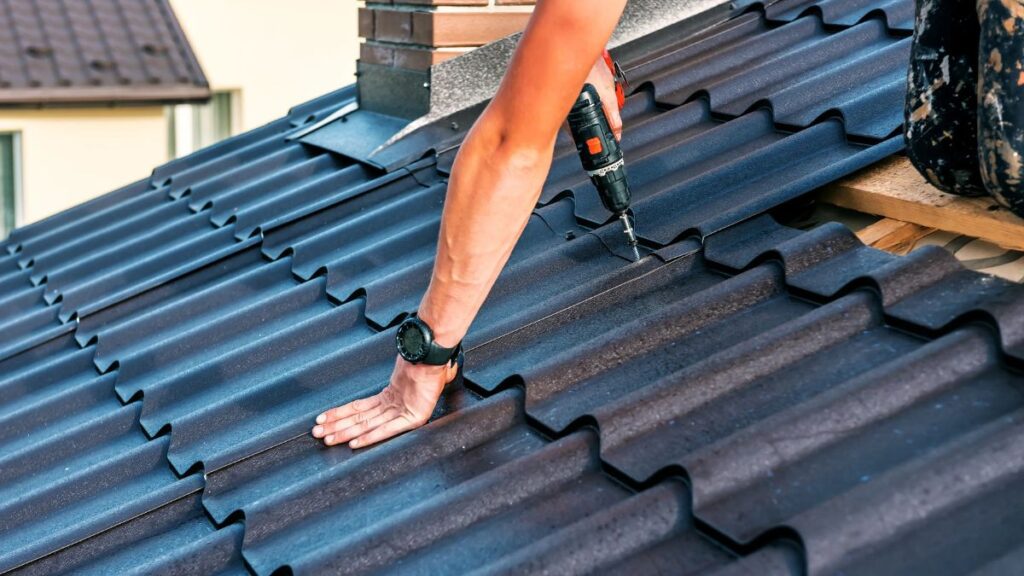Why Roof Maintenance Matters
A well-maintained roof does more than keep the rain, snow, and sun at bay—it’s a critical investment in a property’s comfort, energy efficiency, and safety. Over time, even minor lapses in roof care can lead to significant problems, including mold growth, insulation loss, or costly emergency repairs. Homeowners who regularly monitor their roofs often report fewer surprises when harsh weather strikes. Issues detected early—such as minor leaks or damaged shingles—are usually resolved without extensive labor or significant expenses. For those contemplating essential decisions like hiring a roofer Freedom, CA or simply looking for trusted ways to safeguard their investment, it’s clear that developing a solid maintenance routine is both cost-effective and wise for the long run. Not only does this prevent emergencies, but it also protects the home’s structure and resale value, providing peace of mind year after year.
Common Weather Challenges for Roofs
Each season puts roofs to the test. Torrential rains, high winds, biting snow, and unrelenting sunshine all affect roof materials in different ways. For example, areas with regular downpours are especially susceptible to water infiltration through weak shingles or poorly sealed flashing. Cities with abundant tree cover often experience branch impacts and debris accumulation, which can lead to clogged gutters or direct damage.
Snow and ice present their own set of risks. As snow piles up, the added weight on roofing can threaten structural integrity, particularly on older homes or buildings that haven’t been designed for extreme loads. In hotter climates, UV radiation accelerates the deterioration of shingles and roof membranes, causing them to crack, curl, or lose protective granules. Homes subjected to frequent freeze-thaw cycles also encounter persistent expansion and contraction, which amplifies the risk of splitting and roof leaks. Recognizing these patterns allows proactive steps, such as materials selection and maintenance planning, that ultimately add years to a roof’s service life.
Routine Roof Inspection Checklist
Consistent inspections are one of the best methods to ensure minor problems don’t escalate into major headaches. Experts strongly recommend examining a roof at least twice a year—ideally in the mild months of spring and fall. Inspections should also be conducted after significant weather events, including windstorms and hail. Here’s what homeowners should look for every time:
- Scan the entire roof for missing, broken, loose, or curling shingles, especially after storms with high winds.
- Watch for dark streaks or moss patches. These can signal excess moisture, which can weaken the roof’s water barrier and hasten decay.
- Inspect attic spaces and ceilings below the roof for wet spots, mold, or any visible leaks.
- Check that all flashing around chimneys, vents, skylights, and other penetrations is intact and free from corrosion.
- Look inside gutters for an unusual accumulation of sand-like granules—which suggests the shingles may be nearing the end of their service life.
Documenting each inspection with notes and photos can help you or your preferred roofing professional spot trends and address issues proactively. This simple diligence is key to a longer-lasting, trouble-free roof.
Preventing Leaks and Water Damage
Water is the silent enemy of every roof. Once a leak starts—often around valleys, seams, or old flashing—it can lead to damage in rafters, ceilings, insulation, and even within electrical systems. Prevention begins with selecting a robust underlayment and ensuring that all exposed seams and penetrations are expertly sealed. After installation, periodic checks for holes, cracks, or slipped materials help address vulnerabilities before water can enter.
Early intervention is significant for flat or low-slope roofs, where water tends to pool. These areas demand excellent drainage systems, free of blockages or design flaws. Homeowners should verify that water flows freely off the roof, away from areas where pooling could become a problem. Resealing around vents, boots, skylights, and other joints annually is another practical step in keeping interiors dry, even during intense rainfall.
How to Handle Snow and Ice
Even in regions not known for winter extremes, a sudden snowstorm can place unexpected pressure on your roof. Heavy, wet snow can quickly double or triple the load, especially in valleys and on low-pitch sections. When the snow is not removed, structural supports may begin to sag and, in severe cases, may even collapse. Using a plastic, soft-edged roof rake allows homeowners to safely relieve some of that load from the ground, protecting both the roof and personal safety.
More concerning are ice dams—solid ridges of ice that can trap melting snow, forcing water up under the shingles. This leads to interior leaks, stained ceilings, and the potential for insulation rot or mold growth. Prevention begins in the attic, where proper insulation and ventilation help balance roof temperatures and limit the conditions that allow ice dams to form. Where ice dams are chronic, products such as heat cables or attic fans can be used for added security against winter water infiltration.
Dealing with Heat and UV Exposure
The sun is as challenging for roofs as any storm. Over the years, unrelenting heat and UV cause roofing materials—especially asphalt shingles—to shrink, crack, and shed protective coatings. This exposes inner layers and sets the stage for future leaks or rapid deterioration. Homeowners in hot, sunny climates are well-advised to opt for light-colored or cool-roof-certified shingles, which reflect solar energy rather than absorb it.
Ventilation again plays a central role. Without adequate air movement through attics and roof cavities, heat becomes trapped, raising the risk of blistering and moisture buildup. This isn’t just a concern for the roof; poor ventilation can spike indoor temperatures, overwork air conditioners, and reduce overall energy efficiency. Routine checks of ridge, soffit, and gable vents for blockages will help ensure optimal airflow—even in the peak of summer.
Proper Gutter Care for Roof Longevity
It’s easy to neglect gutters, but their impact on roof health is enormous. Clogged or broken gutters interrupt the safe flow of water off the roof, which can back up under shingles, rotting fascia boards, or even erode the foundation over time. Comprehensive roof maintenance always includes a strategy for gutter care:
- Remove debris from gutters and downspouts at least twice yearly, focusing on the late fall and spring when blockages are most common.
- Inspect gutters for standing water, leaks, or separation at seams, all of which can signal a problem with flow or attachment.
- Secure loose hangers or brackets to prevent gutter collapse during heavy rain or snow loading.
- If trees are nearby, consider installing leaf guards or mesh covers to reduce future clogs and maintenance needs.
Thoughtful gutter upkeep is one of the simplest and most effective defenses against costly roof and siding damage, helping to protect the entire perimeter of any home.
When to Seek Professional Help
While homeowners can take many steps to maintain their roofs in good condition, certain situations require specialized expertise and safety equipment. Extensive shingle or flashing damage, evidence of structural sagging, or watermarks spreading across ceilings and walls call for a professional evaluation. Experts can conduct a thorough inspection, identify unseen problems, and complete repairs to modern standards, thereby minimizing the risk of future leaks or failures.
Major repairs or replacements also demand professional-grade materials, proper permitting, and strict adherence to building codes, all of which are best overseen by a certified roofer. Having a trusted contractor inspect your roof every few years, or sooner if you spot trouble, provides long-term reassurance and supports insurance claims if disaster does strike.
Resources and Latest News
Roofing is a field where design innovations and new materials emerge quickly, offering improved performance and energy savings. Keeping up with current developments is easy with resources like this guide on the best roofing materials for your home, which compares various systems in terms of durability, climate suitability, and cost-effectiveness.
Staying informed helps homeowners anticipate maintenance needs and make upgrades when it makes sense. Subscribing to weather advisory services or local contractor updates ensures you’re prepared for what each season might bring. Ultimately, regular proactive attention, supported by expert insights and new information, remains the surest way to achieve decades of reliable, watertight roof protection.





